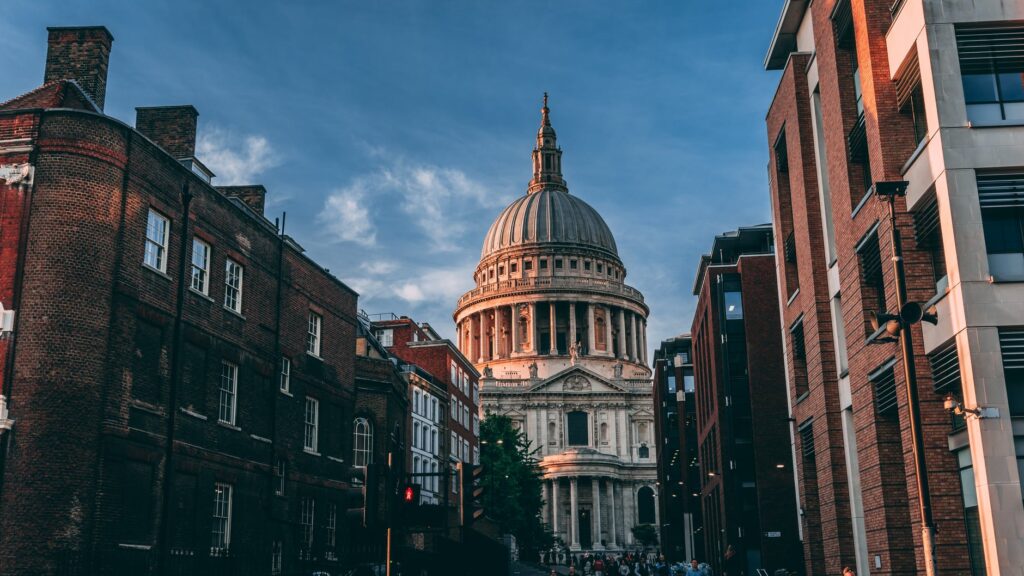I wander through each chartered street,
Near where the chartered Thames does flow,
And mark in every face I meet
Marks of weakness, marks of woe.
In every cry of every man,
(And) In every infant’s cry of fear,
In every voice, in every ban,
The mind-forged manacles I hear.
How the chimney-sweepers cry
Every blackening church appalls,
And the hapless soldier’s sigh
Runs in blood down palace walls.
But most, through midnight streets I hear
How the youthful harlot’s curse
Blasts the new-born infant’s tear
And blights with plagues the marriage hearse.
Brief Summary
The speaker wanders through the streets of London and comments on his observation. He sees despair in the faces of the people he meets and hears fear and repression in their voices. The woeful cry of the chimneysweeper stands as a chastisement to the Church, and the blood of the soldier stains the outer walls of the monarch’s residence. The nighttime holds nothing more promising: the cursing of prostitutes corrupts the newborn infant and sullies the” Marriage hearse”. (Poem: London)
Critical Analysis
The opening image of wandering, the focus on sound, and the image of stain in this poem’s first lines recall the introduction to Songs of innocence, but with a twist; we are now quite far from the piping, pastoral bard of the earlier poem: we are in the city.
The poem title denotes a specific geographic space, not the archetypal locales in which many of the other songs are set. Everything in this urban space—even the natural River Thames—submits to being “charter’d,” a term that combines mapping and legalism. Blake’s repetition of this word (which he then top with two repetitions of “mark” in the next two lines) reinforces the sense of stricture the speaker feels upon entering the city. It is as if language itself, the poet’s medium, experiences a hemming-in, a restriction of resources. Blake’s repetition: thus “mark”, between the third and fourth lines, changes from a verb to a pair of nouns—from an act of observation which leaves some room for imaginative elaboration, to an indelible imprint, branding the people’s bodies regardless of the speaker’s actions.
Ironically, the speaker’s “meeting” with these marks represents the experience closet to a human encounter that the poem will offer soldier, harlot—are known only through the traces they leave behind: suffering abound, but a complete human from—the human form that Blake has used repeatedly in the song to personify and render natural phenomena—is lacking. (Poem: London)
Third Stanza (Analysis cont.)
In the third stanza, the cry of the chimneysweeper and the sigh of the soldier metamorphose (almost mystically) into soot on church walls and blood on place walls—but we never see the chimney sweeper or the soldier himself. Likewise, institutions of power—the clergy, the government—are rendered by synecdoche, by the mention of the places in which they reside. Indeed, if their oppressors ever appear in the body: Blake does not simply blame a set of institutions or a system of enslavement for the city’s woes; rather, the victims help to make their own “mind-forg’d manacles,” more powerful than material chains could ever be.
The poem climaxes at the moment when the cycle of misery recommences, in the form of a new human being starting life: a baby is born into poverty, to a cursing, prostitute mother. Sexual and marital union—the place of possible regeneration and rebirth—is tainted by the blight of venereal disease. Thus Blake’s final image is the” Marriage hearse,” a vehicle in which love and desire combine with death and destruction.

